184

Photo 19-N-19054 courtesy of NHHC.
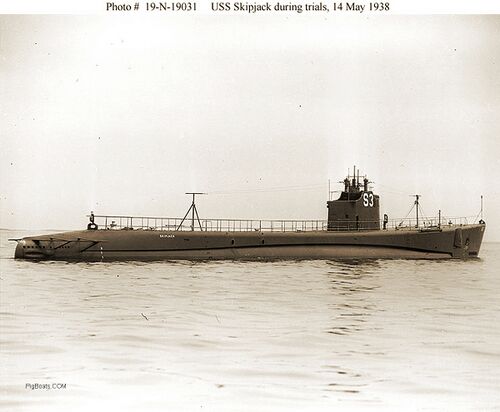
This slightly different angle shows that even though the 3"/50 caliber gun has not been installed, the hook-shaped mount for a Browning M2 .50 caliber machine gun has been emplaced on the forward deck.
Photo 19-N-19031 courtesy of NHHC.
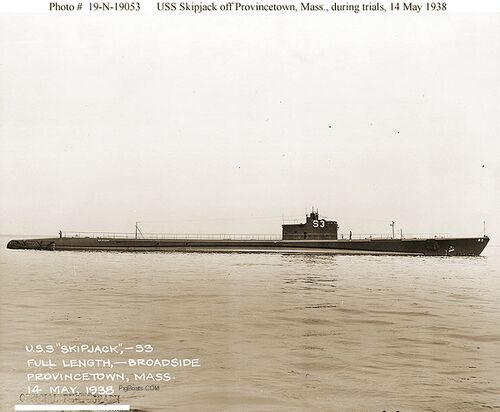
A broad starboard view of Skipjack off Provincetown, MA., May 14, 1938.
Photo 19-N-19053 courtesy of NHHC.
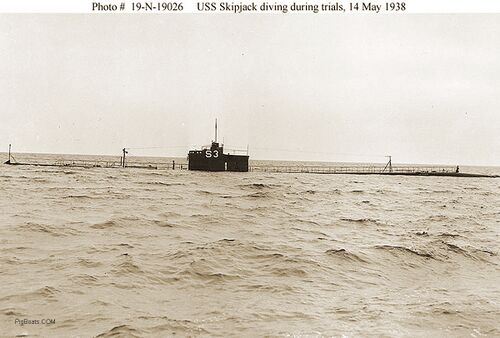
Skipjack making a static dive in Cape Cod Bay during trials, May 14, 1938. No wake is being produced, indicating she is at a dead stop. This very well might be her first dive.
Photo 19-N-19026 courtesy of NHHC.
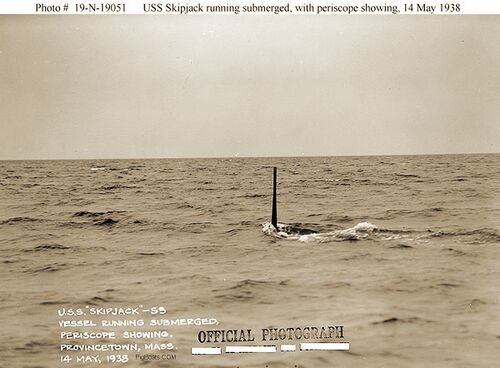
Moving now, Skipjack is making way with just her periscope above the waves. She is moving at only about three knots.
Photo 19-N-19051 courtesy of NHHC.
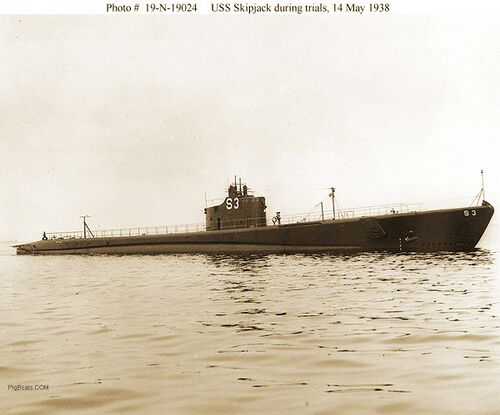
Back on the surface, Skipjack continues her trials in Cape Cod Bay, May 14, 1938. Between the machine gun mount and the fairwater is a circular antenna for Radio Direction Finding (RDF) equipment. This antenna could receive signals even when the boat was submerged at periscope depth.
Photo 19-N-19024 courtesy of NHHC.
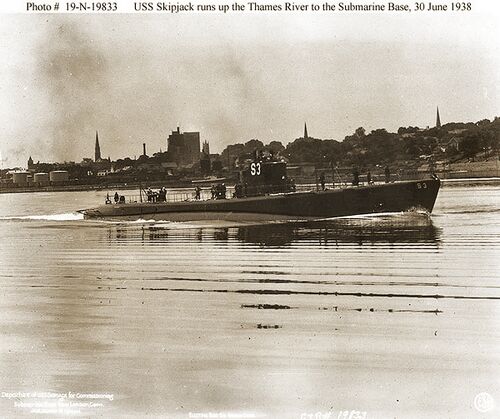
A now fully completed but not yet commissioned Skipjack northbound on the Thames River, Connecticut, June 30, 1938. She was commissioned that day, so she is undoubtedly headed upriver to Submarine Base New London and her commissioning ceremony.
Photo 19-N-19833 courtesy of NHHC.
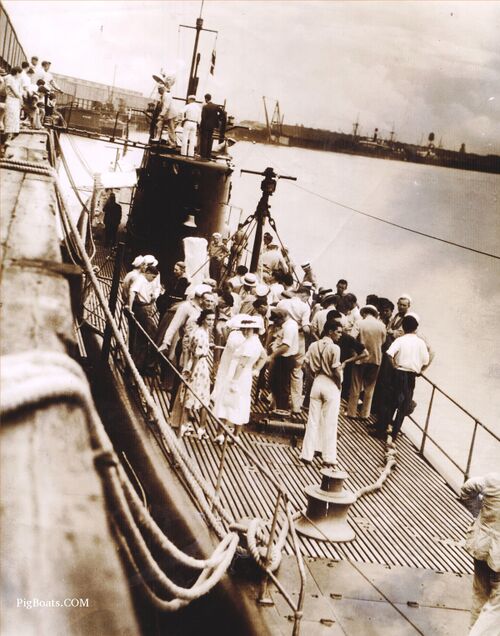
The Skipjack moored to the Dumaine Street Wharf in New Orleans, LA., late summer 1938. She made a three-day visit there as she was rounding up her post-commissioning shake down trials along the U.S. East Coast and Caribbean. She ranged as far south as the Canal Zone before making port calls at New Orleans, Panama City, Florida, Newport, RI and Provincetown, Mass. She also visited Halifax, Nova Scotia before drydocking at the Portsmouth Navy Yard in Kittery, ME. for a post-shakedown yard period.
The visitors are boarding the submarine via a narrow and somewhat dangerous gangplank that stretches from the dock to the top of the bridge fairwater. From there they made their way down into the submarine and on to the deck. There is a group clustered around the forward rescue buoy housing on the port side, perhaps for a demonstration of the telephone that is inside the buoy, used to communicate with the crew if the submarine were to sink. Another group is clustered around the deck opening for the main companionway on the starboard side of the torpedo room hatch. This companionway led down into the superstructure, giving access to the torpedo room escape trunk through a watertight door in the side of the trunk. From there they would have access to the interior of the boat.
Newspaper wire photo in the private collection of Ric Hedman.
Page created by:
Ric Hedman & David Johnston
1999 - 2023 - PigBoats.COM©
Mountlake Terrace, WA, Norfolk, VA
webmaster at pigboats dot com
